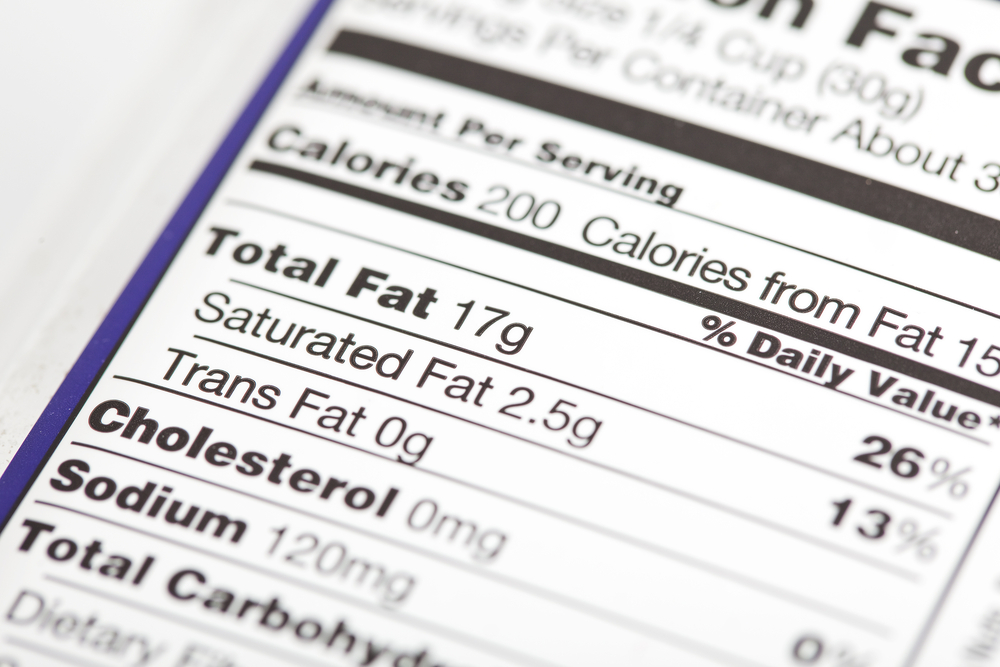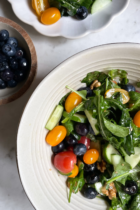
Anyone can tell you that eating packaged food isn’t great for health, but even the nuttiest health freaks can’t make everything at home from scratch! Thus, reading through nutrition labels is a practice that can help you make the most informed choices when you hit the grocery store isles. I considered my choices to be rather healthy because I had a quick box label-reading ritual: I checked the best before date and the calorie content; then I decided whether the box is going in my cart or not. But, as I’ve recently learnt, there’s more to deeming a product worth eating than just these two things!
Here’s my guide to decoding and understanding nutrition labels on food packaging:
The first thing you should check is the list of ingredients. Companies are supposed to declare the ingredients according to its percentage, so what you see amongst the top few names is what makes the bulk of your food/drink. The shorter and cleaner (no scientific names) an ingredient list, the less processed the food will be.
But that’s not all. With the increasing awareness about sugar and its subsequent boycott, manufacturers have found fancy names to hide sugar in their products. Look out for anything ending in “-ose”, like fructose, sucrose etc. Other sugar sources include agave nectar, brown sugar, cane crystals, cane juice, carob syrup, corn syrup, crystalline fructose, date sugar, fruit juice, grape sugar, honey, malt syrup, maple syrup, rice syrup, high fructose corn syrup etc. Not to miss the ingredient’s natural sugar content! Whew. And that’s just one ingredient you need to be vary of.
After decoding the ingredient list, look at the nutrition table. Start with the recommended serving size, as every piece of information on the label relates back to the stated serving size. For example, a standard serving size of Oreos is 160 Calories, which doesn’t seem too bad at all – until you realize that it means only 3 cookies! Often, the package will have nutritional info mentioned for 100 g, whereas the entire portion may not be that much. Thus, it’s always advisable to read the serving size and then multiply or divide according to how much you plan to eat.
Next, move on to the calorie count. Simply looking at the calorie number isn’t a good way to think about food – compare the calories with the nutrients that the food has to offer, and try to determine the source of those calories. Calories from healthy sources are not bad for you. For example, if you are following a keto diet, something like this or this butter might work for you; because although it’s high-calorie, all of it is mostly from good fats.
Talking of fats, not all fats are bad! Yes, you should stay away from saturated fats (contained in milk, butter and red meat as it is capable of raising your blood cholesterol level) and trans fats (hydrogenated fats added to improve the shelf life of a product). However unsaturated fats found in plant oils, avocado, nuts, olives can in fact lower blood cholesterol. Think about limiting your cholesterol and sodium consumption, while looking for fibers from ingredient names you recognize; as well as vitamins, proteins and minerals like calcium and iron.

Most importantly, remember to NEVER BELIEVE THE CLAIMS ON THE FRONT OF THE BOX.
More often than not, those are simply clever buzzwords that are a part of the product’s marketing strategy and meant to trick the consumer into a sale. Here are a few commonly used terms that instantly make a product appear “healthier,” and therefore more attractive; which is why you should be vary of them:
NATURAL
Considering the lack of a formal definition for the word when referenced to food, “natural” is not a claim to be taken too seriously. Although it does mean that the food is absent of any artificial additives, it does not address food production – so it could very well be a buffet of pesticides!
PROCESSED AND UNPROCESSED
When given an option between the two, we opt for unprocessed food thinking it’s healthier, as it means it’s not canned, frozen or packaged. But there’s more to it. “Processed” refers to food that has undergone a change of character, which need not be a bad thing – it can be as simple as raw nuts (unprocessed) vs. roasted nuts (processed); or raw milk (unprocessed) vs. pasteurized milk (processed).
LOCAL
The local food movement is gaining momentum and is an eye-grabbing term to add to packaging. “Local” refers to buying food that is grown close to where you live. It is connected to a broader philosophy of environmental sustainability, and supports the local economy. Still, even “local” can have a variety of nuances, as there is no definitive classification of distance used by everyone.
ORGANIC
Of all these terms, “organic” has the most specific criteria and legal meaning, but is also most misused and misunderstood.
As defined by the USDA, organic meat, poultry, eggs and dairy products must come from animals that are given no antibiotics or growth hormones. Organic plant foods must be produced without using conventional pesticides or fertilizers made with synthetic ingredients or sewage sludge, bioengineering, or ionizing radiation. A government-approved certifier must inspect the farm to ensure these standards are met. In addition to organic farming, there are also USDA standards for organic handling and processing.
Since “organic” instantly makes the product more appealing, it’s often misused without any certification, and interchangeably for “natural.” It also reveals no information about whether the product is healthy or not. For example, organic sugar is still sugar. Make sure to look for the certification on the box if to verify the packaging claim, as well as read the ingredient list.
LIGHT
Used in reference to either fats or calories, when a product is designated with the “light” label, usually a 50% fat cut or 1/3 calorie cut is required compared to the classic version of the food. Keep in mind that the food might not actually be light in calories, but is only lighter as compared to something else or it’s own classic version.
LOW-FAT
Low fat, reduced fat or less fat does not always mean it’s healthier. A food must have less than 3 grams of fat per serving in order to be considered low-fat. In order for it to be labeled reduced fat or less fat, there must be 25% less fat in the food compared to the original iteration of the same product. The problem with a lower fat content is that these foods often have added sugar and other fillers to make up for reduced fat content. Fat contributes to flavor and texture, and food manufacturers have to make up the difference with other ingredients.
Along the same lines, if a package claims “Zero trans fat,” it just means that there is less than 0.5g of trans fat per serving. In such situations, take note of the serving size to ensure that it’s not suspiciously tiny.
NO ADDED SUGAR
This doesn’t mean there is no sugar in the food.
Take fruit juice, for example. The label may say no sugar added, but the ingredients include “juice concentrate,” which has high sugar content. Yet, the label is considered fair because the company didn’t add straight-up sugar to the juice.
Many foods that have natural sugars can print a ‘no sugar added’ label, but they certainly still contain sugar. So if you are keeping an eye on your sugar intake, don’t stop at the “no sugar added” labeling on the front; flip it over and read the nutrition label as well.
MULTIGRAIN
Multigrain is not equal to eating whole wheat. When you want fiber-rich wheat bread rather than white bread, look for labels that say 100% whole wheat or whole grain, not multigrain or “made with multigrain.” The bread may contain multiple grains, but there’s a good chance that it’s made with majority white flour. Check the ingredient list for the first ingredient – if it says white (or all-purpose) flour, it’s a no-go.
While this might seem like a lot of info, reading nutrition labels gets easier with practice. Keep a few of these key points in mind; and the more often you’ll do it, the faster you’ll be able to spot red flags. It’ll help you make more informed choices about the food you eat, while allowing you to indulge more responsibly!






